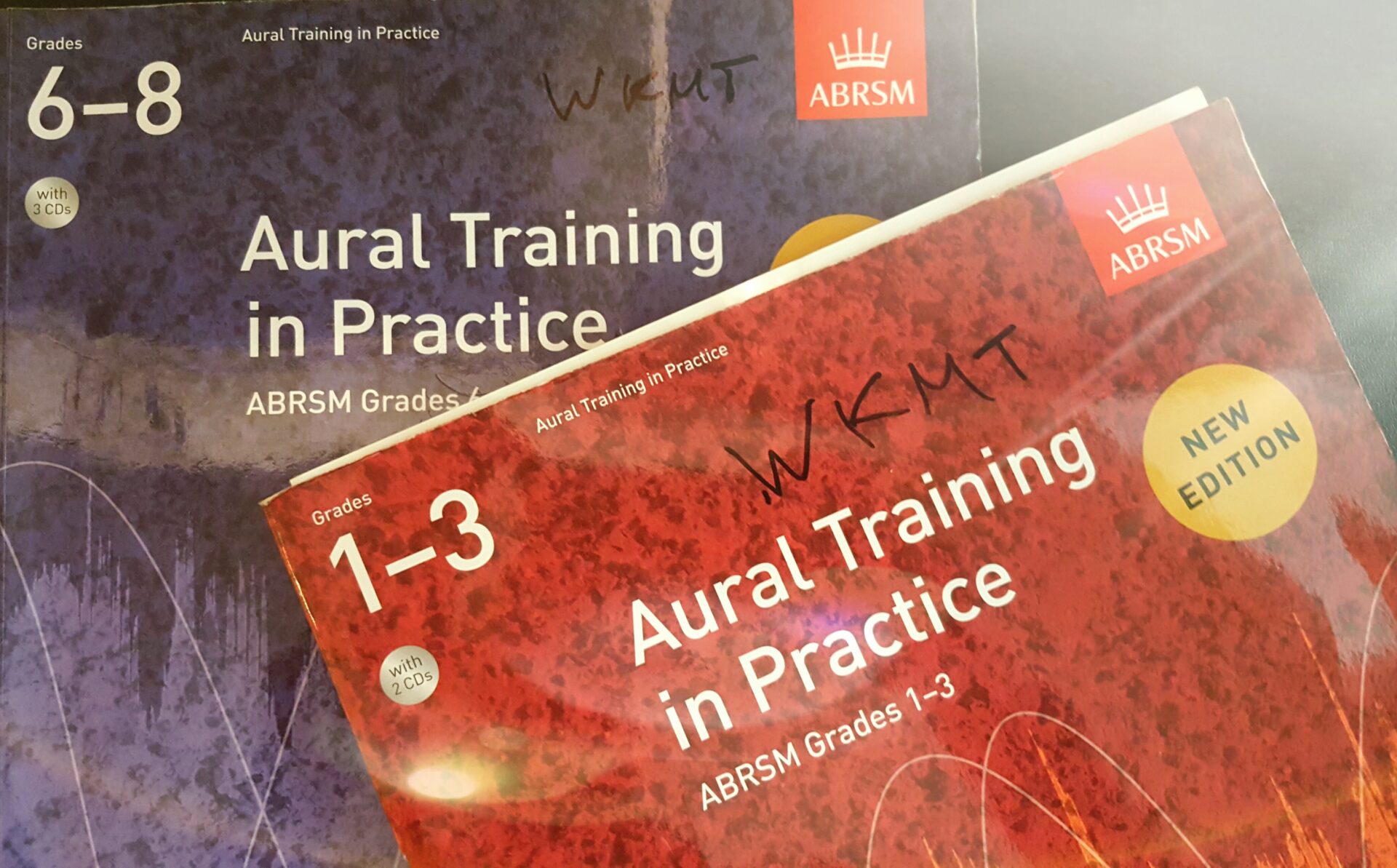Aural training in practice
Aural training in practice with wkmt.
Aural training in practice.
learn more about the aural tests with this new article based on ABRSM EXAMINATIONS.
WKMT brings a recent article published on the blog, which goes deeply to the Aural Training in any musical test by ABRSM. Sabrina Curpanen, a piano teacher at the studio, and specialised in grade piano students, explains its importance and all that this test involves.
“During my teaching experience, I come across a number of students who were preparing higher Grades 6-8 and they are experiencing difficulties in the Aural Test.
Some of them find very easy learning pieces and also preparing their technical works such as Scales and Arpeggios but they find the Aural Test very difficult especially when it comes to singing. One of the tasks is to vocally reproduce a short melody played by the examiner on the piano or for higher grades sight singing and reproducing the bass or soprano line of a short piece of music.
I am aware that it might be very difficult for a piano teacher to fit Pieces, Scales and Arpeggios, Sight reading and Aural Test in a lesson but I try to save more time for Aural Test a couple of month before the Test for every grade. My advice is not to be fooled by the fact that the Aural test might sound simple for the early Grades but I strongly recommend to keep on practising it as this creates a good foundation for the hardest Grades and don`t leave it to the last minute.
The content of this article will focus on the initial requirements for the ABRSM Aural Test GRADE 1-3. The test involves four parts:
-
Pulse and metre. The candidates need to recognise if the piece played by the examiner is in 2 or 3 times for Grade 1 and Grade 2 and also 4 times for Grade 3. It is very important to start practising from the very beginning with a well-known piece and knowing already the time signature. Sometimes, I use famous nursery rhyme to get started. I sometimes say to my students that with a two time it is possible to march and it has a “square” feeling to it while in a piece in three times the feeling is more of a circle. For the beginning, most of the Aural test pieces have an accent on the strong beats. Another recommendation is to clap louder and make sure to highlight the strong beat. If it is in two time let`s say that the first clap is forte and the second one piano, if it is in three times the first clap is forte, second one and third one piano, if it is in four times the first and third clap are forte while the second and the fourth one are piano.
-
Singing as echoes. When it comes to singing, I had experience with students who seem to have a natural aptitude to reproduce with their voice what they just heard on the piano and another student who is singing everything flat. In the second case, I ask them to sing back part of pieces they already know or scales they are playing gradually starting from singing consecutive notes up to 2nd and 3rd and the notes forming the relative triads. It is very important to sing loudly saying “la” instead of humming quietly. It is better to try and have a chance to get it right than just whistling something too quietly. I always remind my students that they won`t be judged in their voice quality but only the awareness of the pitch changes. I do believe that it is very important to start doing these exercises from the Grade 1 and don`t neglect the problems because I had experience with students on higher graded who needed to start from scratch because they didn`t practise from an early stage.
-
Differences. Recognise if a short melody played for the second time by examiner has changed at the beginning or at the end and also recognise if the difference involved pitch or rhythm for Grade 2 and 3. This might sound not too difficult but the most common mistakes happen because of a lack of concentration by the candidate. I recommend my students to sing back what they heard in the short amount of time before the examiner will repeat the melody with the change. It is also very important to specify where the change has happened as well as saying what has changed.
-
Listening skills. The candidates need to answer questions about dynamics, tempo changes, articulation, the major and minor key about a short piece of music played by the examiner. There is no excuse. This part of the test can be practised in many ways…also with pop songs. As for the differences, it is very important to keep up concentration and asking the students to go through what they heard in terms of dynamics in their mind. Major and minor keys seem to be very easy to recognise as the common association of major with happiness and minor with sadness still work very well. It might a little bit more complicated to detect the change in dynamics especially if they are gradual. I have noticed that this is much easier to recognise if one is a very sensitive player and pay attention when playing a crescendo or a diminuendo. It also seems easy to recognise staccato and legato and tempo changes as they are made in a very obvious way for the Early Grades.”
For more info, go to the full article through the link aforementioned.



